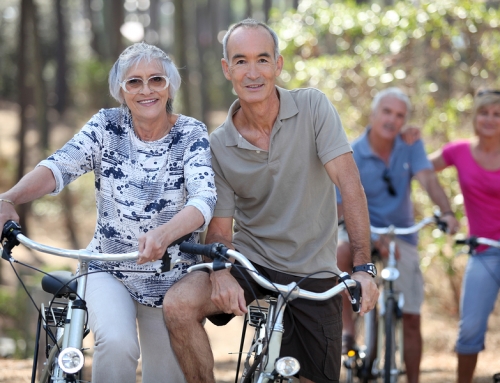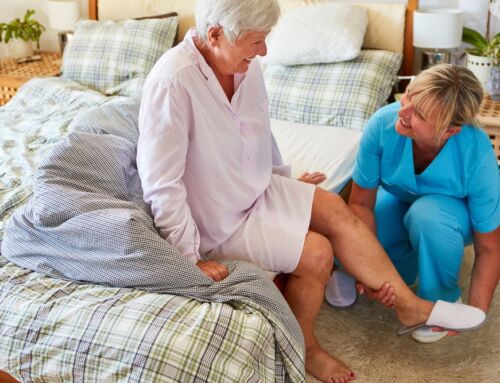A new study was released last month by researchers out of Norway that looked at whether physical activity and sedentary time were correlated with an increased risk of an early death.
The research team analyzed data from eight previous studies done in Norway, Sweden, the United Kingdom and the U.S., which looked at a total of 36,383 people who were at least 40 years old and with a mean age of 62.6. The participants in the studies that were analyzed were tracked over an average of 5.8 years.
All of the previous studies had used wearable accelerometer devices to track the amount and intensity of the wearer’s activity. These devices measure total activity as well as intensity level (light, moderate, or vigorous). A light intensity activity might be weeding the garden or folding laundry. A brisk walk or mowing the grass would be examples of moderate activities. Going for a run or lifting weights would be vigorous intensity activities.
After examining the data, the researchers concluded that, “Higher levels of total physical activity, at any intensity, and less time spent sedentary, are associated with substantially reduced risk for premature mortality…in middle aged and older adults.” In fact, the risk of an early death was approximately five times higher for study participants who were sedentary as compared to those who were most active.
>> Related: Live to 100 With These Blue Zone Diet Tips
Get moving!
Moving your body has numerous physical and mental health benefits. Staying physically fit and active can make you feel more energetic, reduce stress, get better sleep, and lower your risk of numerous chronic diseases. These benefits to your overall wellbeing begin immediately after exercising, so even short episodes of physical activity can benefit your health.
The U.S. Department of Health and Human Services (HHS) recommends adults do at least 150 minutes per week of moderate-intensity, or 75 minutes a week of vigorous-intensity aerobic physical activity, or an equivalent combination thereof. HHS also recommends that adults do at least moderate-intensity muscle-strengthening activities involving all major muscle groups on two or more days per week. Older adults also should add balance training into their exercise regimen.
>> Related: The Value of Community at a CCRC
Increased wellbeing for seniors
I recently wrote about a study that showed that on the whole, residents of retirement communities, such as continuing care retirement communities (CCRCs, or life plan communities), are markedly happier, healthier, and have a greater overall sense of wellbeing than their peers who decide to remain in their current home.
There were a number of factors that the study found that accounted for this “wellbeing gap” between retirement community residents and non-residents. Among them was that retirement community residents were from 2 to 5 times more likely than non-residents to be participating in an array of activities. This included social events, trying new activities, getting together with friends, eating with other people, and spending time with family more frequently than they had in the past. Also notable on this list of activities was that retirement community residents were more likely to exercise than their non-resident counterparts.
It is worth noting that we can’t say with certainty if this higher level of overall wellbeing among retirement community residents is actually because they live in a community like a CCRC or because residents are healthier when they move into such a community. But either way, the lifestyles lived by retirement community residents bode well for their health and longevity.
>> Related: Research Continues to Find Benefits of Retirement Communities
Promoting healthy lifestyles at a CCRC
CCRCs offer a number of activities that help ensure their residents remain active. Nearly every CCRC has an on-site fitness center. Such facilities make staying physically fit convenient and fun for residents with programs like low-impact aerobics classes and yoga. Oftentimes, these on-site fitness centers also are staffed by at least one qualified fitness professional who helps facilitate classes and teach seniors how to exercise safely.
Swimming is a wonderful, low-impact way for seniors to exercise, and CCRCs will frequently have at least one pool on their campus. Some will even have aqua-aerobics classes or aqua-jogging clubs to encourage residents’ fitness in a group setting. Oftentimes you also will find walking paths and nature trails on the grounds of a CCRC, where residents can hike or bike while also enjoying some fresh air.
A growing number of communities are even finding outside-the-box ways for residents to remain active with activities like paddle-boarding (which promotes balance and strength while boosting cardio health), Zumba and kickboxing classes, and even on-campus adult playgrounds. With so many fitness options, staying active at a CCRC is easy…and fun!
>> To find information on CCRCs in your area, check out our free online community search tool!






